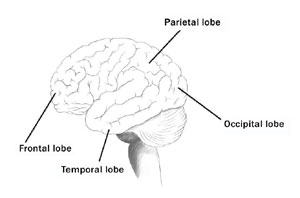Why Head Injuries Are So Dangerous
In this article, you will find:
Page 2
- Limbic System This region, located between the Diencephalon and the intellectual Cerebrum, packs a big whallop in the human experience. We can experience joy, anger, happiness, fear, and many variations of those. Thanks to this area of the brain, our emotions get dimension and feelings—the color and depth that makes life a celebration. Together with the intellect, the Limbic System deciphers the messages it receives from below and creates emotional responses to them.
- Cerebrum You might call it the CEO, the Man, or the Head Honcho. The cerebrum is the intellectual heart of the very being. Here, the higher functions decode and respond to the various messages coming in from the areas of memory, thought, and even emotion. This part of the brain enables you to understand and organize your thoughts, to perceive the world and its meaning, to communicate, to finish tasks, and to dissect and solve problems. This is where reading, writing, and 'rithmetic create a masterly whole.
The hypothalamus, though no bigger than a pea, is also a whirling dynamo. It controls basic instincts ranging from appetite to sexual arousal and from thirst to sleep. Thanks to its position close to the pituitary gland—the master gland of the body—it also controls the hormonal (chemical) secretions that, as they propel messages through the brain, determine the underlying basis of what we are, how we feel, and what we think, as well as “telling” the pituitary gland which hormones to release for growth, metabolism, sex, lactation, and other “basics.” Because it lies so close to the “upper crust” of the brain, it also helps regulate our emotions, motivations, and moods.
Globe and Lobe
The brain is not only divided into parts, it is also divided into two distinct hemispheres: the right and the left. The two work in tandem to make the whole “greater than its parts.” The left hemisphere, for example, provides the ability to speak in most people. The right hemisphere gives that speech its lilt, color, and dialect. When a head injury occurs in the left hemisphere, the functions that are affected usually occur on the right side. Similarly, an accident in the right hemisphere will create problems in left-sided functions of the body.
Not only are there two hemispheres, but there are four “quarters” or lobes of the brain. Their functions are also at risk if a head injury occurs in their “section.” These are the four “quarters”:

which are responsible for very specific functions.
- Frontal lobes are the most crucial part of the brain in terms of intellect, emotion, organizational and executive skills, and personality.
- Temporal lobes hold the bulk of the memory. They also make sense of “incoming information” and decide where it should go within the brain.
- Parietal lobes control the sense of touch, as well as the ability for reading comprehension and understanding spatial relationships.
- Occipital lobes are responsible for sight.
Knowing where a head injury occurred—in which part of the brain, which hemisphere, and which lobe—can help pinpoint the functions that will be affected.